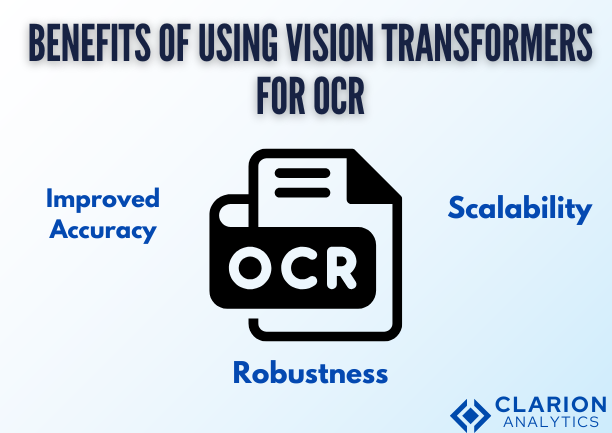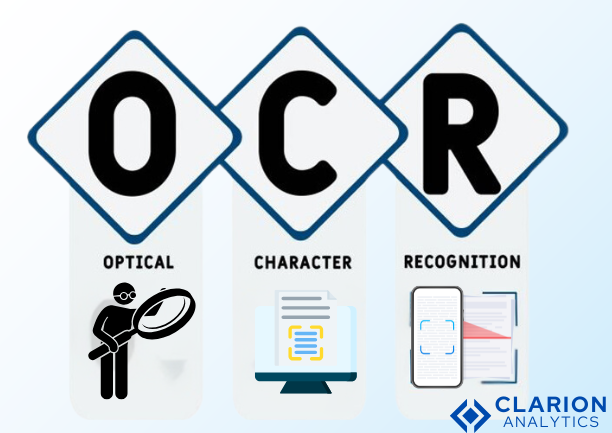
1. Introduction
The developing digital environment demands advanced high-accuracy and high-performance Optical Character Recognition (OCR) for its operations. The three domains of health care and e-commerce along with autonomous systems implement OCR technology which enables document digitization and automated data extraction and text recognition from visual content.
The OCR techniques from traditional times encounter problems while processing images showing poor quality or distorted text and documents in different languages. The scalability of these systems decreases because they fail to handle datasets with intricate and erratic text design formats effectively.
ViTs represent a revolutionary advance in OCR technology which delivers better accuracy together with enhanced flexibility and extended scalability to handle modern OCR challenges. The article examines recent changes in OCR technology enabled by ViTs.
2. What are Vision Transformers?
- a. Overview of Transformers in AI:
- Transformers have dramatically changed the AI landscape, from its early success in NLP through models like BERT and GPT. These architectures are optimized for context understanding, applying self-attention mechanisms to model relationships between and across sequences.
- Some of the strong advantages of transformers include the following:
- Attention Mechanisms: They capture all global dependencies in data.
- Scalability: It can be applied very easily to large datasets.
- Flexibility: Effective across numerous tasks and domains.
- b. Vision Transformers Explained:
- Vision Transformers (ViTs) adapt the transformer architecture for computer vision tasks by:
- Splitting images into fixed-size patches.
- Flattening and embedding these patches as input sequences.
- Applying self-attention mechanisms to model global relationships across the image.
- Comparison with CNNs:While Convolutional Neural Networks (CNNs) focus on local features using filters, ViTs capture global image context, making them more effective for tasks involving complex spatial relationships.
- Vision Transformers (ViTs) adapt the transformer architecture for computer vision tasks by:
3. The Role of Vision Transformers in OCR
a. Traditional OCR Approaches:
Data detection and text decoding in traditional OCR systems works through the use of CNNs and Recurrent Neural Networks (RNNs).
However, these methods have limitations:
Poor handling of distorted or skewed text.
The system fails to identify both written and multilingual text content.
Limited scalability for complex and diverse datasets.
b. Why Vision Transformers Excel in OCR:
OCR achieves better results due to the following advantages that Vision Transformers provide.
Global context modeling enables recognition of intricate relationships throughout an image thus improving text recognition in complex layouts.
The system demonstrates outstanding capability for reading distorted or misshapen text.
The system operates on different types of OCR datasets extending from handwritten text to scene text because it demonstrates flexibility.

4. Key Components of Vision Transformer-Based OCR Systems
a. Preprocessing:
The preparatory step includes separating images into sections followed by embedding transformation with the addition of positional encoding.
The model obtains robustness improvements through data augmentation techniques that include rotation and scaling combined with color transformations.
b. Transformer Backbone:
The ViT backbone operates through a sequence of image patches by applying self-attention layers that identify text areas from background elements.
During OCR systems attention methods operate by selecting important text areas above unwanted background elements.
c. Text Recognition and Decoding:
Transformers achieve sequence comprehension through their implementation of language models which tokenize data for precise element decoding.
The combination of language models with tokenization tools is essential for post-processing because they enhance the accuracy by processing vocabulary entries as well as fixing errors and generating text with proper grammar and meaning.
d. Fine-Tuning for OCR Tasks:
ViTs receive pre-training before being adapted to OCR-specific datasets including handwritten documents alongside multilingual datasets which enhances their task-specific operation.
5. Benefits of Using Vision Transformers for OCR
a. Improved Accuracy:
ViT algorithms maintain superior performance than baseline models on ICDAR and Scene Text Recognition benchmarks when recognizing complex multilingual text with high recognition accuracy rates.
b. Scalability:
Large datasets align perfectly with ViTs because they scale effectively thus making these transformers suitable solutions for enterprise-grade OCR applications supporting multiple languages.
c. Robustness:
Reflections of low-light images along with skewed text or noisy backgrounds do not hinder the performance of ViTs.
6. Challenges in Leveraging Vision Transformers for OCR
a. Computational Requirements:The deployment process for ViTs requires major computational resources and high computational capacity.
Possible solutions:
Model compression.
Hardware accelerators, such as GPUs and TPUs.
b. Data Limitations:
Generalization ability of ViTs depends on their training with diverse high-quality datasets. The combination of data augmentation techniques with synthetic data generation provides some assistance in text recognition problems.
c. Integration with Existing Systems:
Combining legacy OCR pipelines with ViTs demands extra work which also needs backward compatibility solutions for integration..

7. Real-World Applications of ViT-Based OCR
a. Document Digitization:
The automation of data extraction processes from contracts and invoices together with forms by ViTs makes workflows more efficient.
b. Healthcare:
The digitization of medical documentation including prescriptions and handwritten notes becomes more efficient through their applied software.
c. Autonomous Vehicles:
The Visual Transformer extract text which appears on street signs as well as license plates while processing vital visual information.
d. E-Commerce:
Product information in images becomes easier to process through OCR systems using ViTs.
8. Future Directions for Vision Transformers in OCR
a. Advancements in Lightweight Models:
The implementation of efficient Visual Transformer models on edge devices aims to bring OCR technology to mobile devices and Internet of Things systems.
b. Enhanced Multimodal Systems:
The combination of ViTs alongside language transformers will create advanced OCR systems that handle complex OCR tasks.
c. Ethical Considerations:
Future adoption of OCR systems will require solutions for handling biases in the technology combined with protective measures for data privacy because these elements are essential for market growth.
9. Conclusion
- Recap: The revolution that vision transformers brought to OCR in the face of unmatched accuracy, scalability, and robustness can only get better with the advancement of more lightweight models and multimodal systems.
- Are you intrigued by the possibilities of AI? Let’s chat! We’d love to answer your questions and show you how AI can transform your industry. Contact Us
